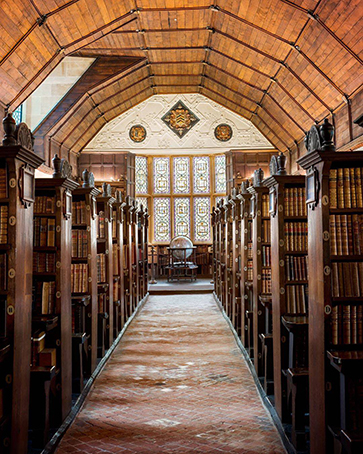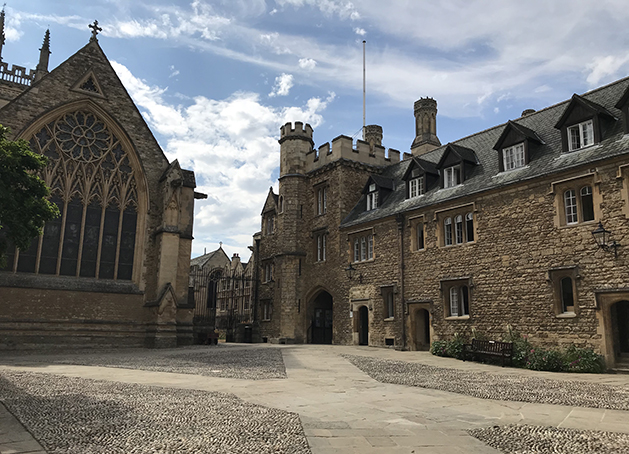The Merton College Library
My new Wrexford & Sloane mystery, Murder at the Merton Library, has just been put up all all major retailers, and as the setting for the dastardly crime that sets off the investigation into old betrayals and new skullduggery takes place is a very beautiful and historic library, I thought I would give a little backstory.
Founded in 1264 by Walter de Merton, Merton College is one of the oldest and most prestigious of the self-governing colleges that make up Oxford University. And it’s such an atmospheric place that I couldn’t resist giving it a marquee role in Murder at the Merton Library!
The Merton College Library is the oldest academic library in the world that has been in continuous daily use, and is also one of the oldest libraries in England. Its treasures include a priceless collection of early printed books and over 300 medieval manuscripts.
In 1276, a decree was made that all Fellows of the college (it was founded with 20 Fellows) were required to leave their books, or an equivalent sum in money, to the library upon their death. These books—books were VERY valuable in those days—were kept locked in heavy chests secured with three locks, and a Fellow had to pay a security to borrow one. Several years later, as the collection grew, books were chained to reading tables so scholars had easier access.
Catalogues still exist from early times—the first one shows the library possessed 85 philosophical volumes. By the late 1300’s, it was deemed necessary to build a new library. The new building formed a side of Mob Quadrangle and connected with the adjacent building. Stained glass windows with subtle coloring in shades of yellow were designed to let in maximum light. (Some of the original glass still exists.
In the 1550s, stalls were constructed, with built-in seating and desks below the bookshelves, along with other alterations to the space. Maps, globes, and astronomical instruments were also housed in the library. In the mid-1600s, a Merton Fellow named Griffin Higgs left a bequest establishing the position of Librarian for the library. (I hope he will forgive me for murdering my fictional head librarian of Merton College within the library’s august walls. The 1600s also saw the donations of some magnificent bibliographic treasures, including a first edition of The Canterbury Tales printed by William Caxton, and collection of dried plant specimens given by Charles Willoughby. And in the 1790s, the books were finally unchained, along with the momentous change of allowing books to circulate.
It wasn’t until 1822 that undergraduates were permitted to use the library—for one hour a week! (No wonder Regency scholars were said to spend a good amount of their time drinking, gambling and wenching!) By 1899, the college was a tad more generous and allowed three hours per day.
Today the library’s collection continues to offer scholars and booklovers a wonderful assortment of bibliographic treasures, including 27 first editions of classical authors donated by Sir Basil Blackwell and over 500 items by or about T. S. Eliot. (J.R.R. Tolkien was a professor at Merton, so I like to think there may be a few hobbits and elves residing in the ancient nooks and crannies!)
I have had the good fortune to spend time within the walls of Merton College and explore the courtyards. However, the library is only occasionally open to the public and the timing didn’t work for me to see the interior. I have a lovely lavishly illustrated book showing many of the details, so I feel that I have some sense of its beauty and the aura of history that permeates the centuries-old wood and stone. But I can’t wait to go back and visit in person.







